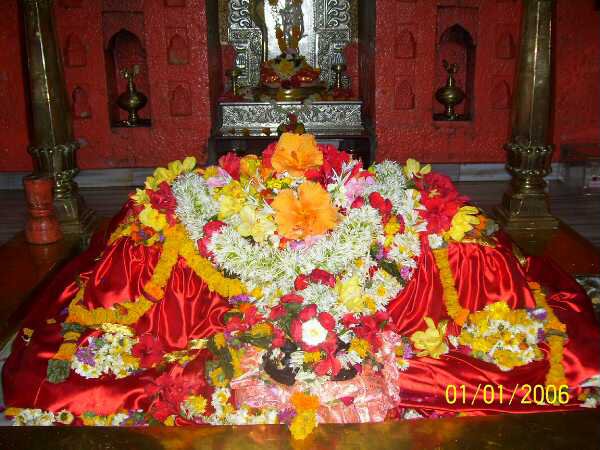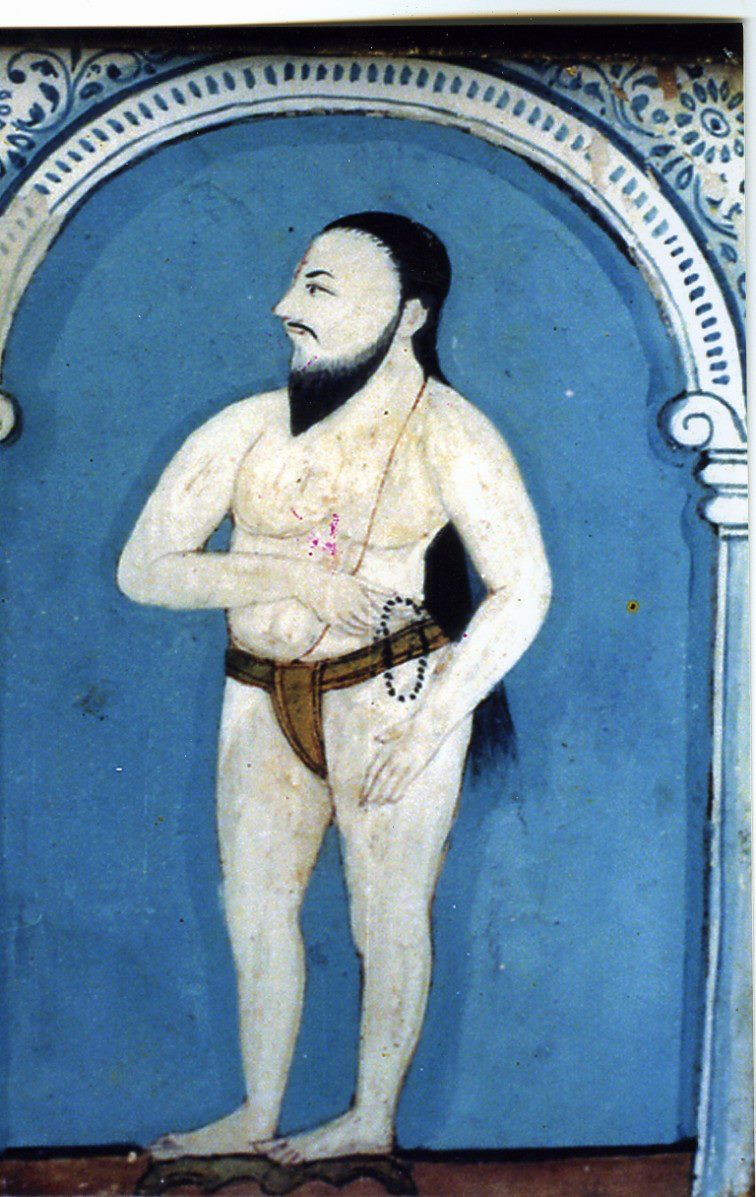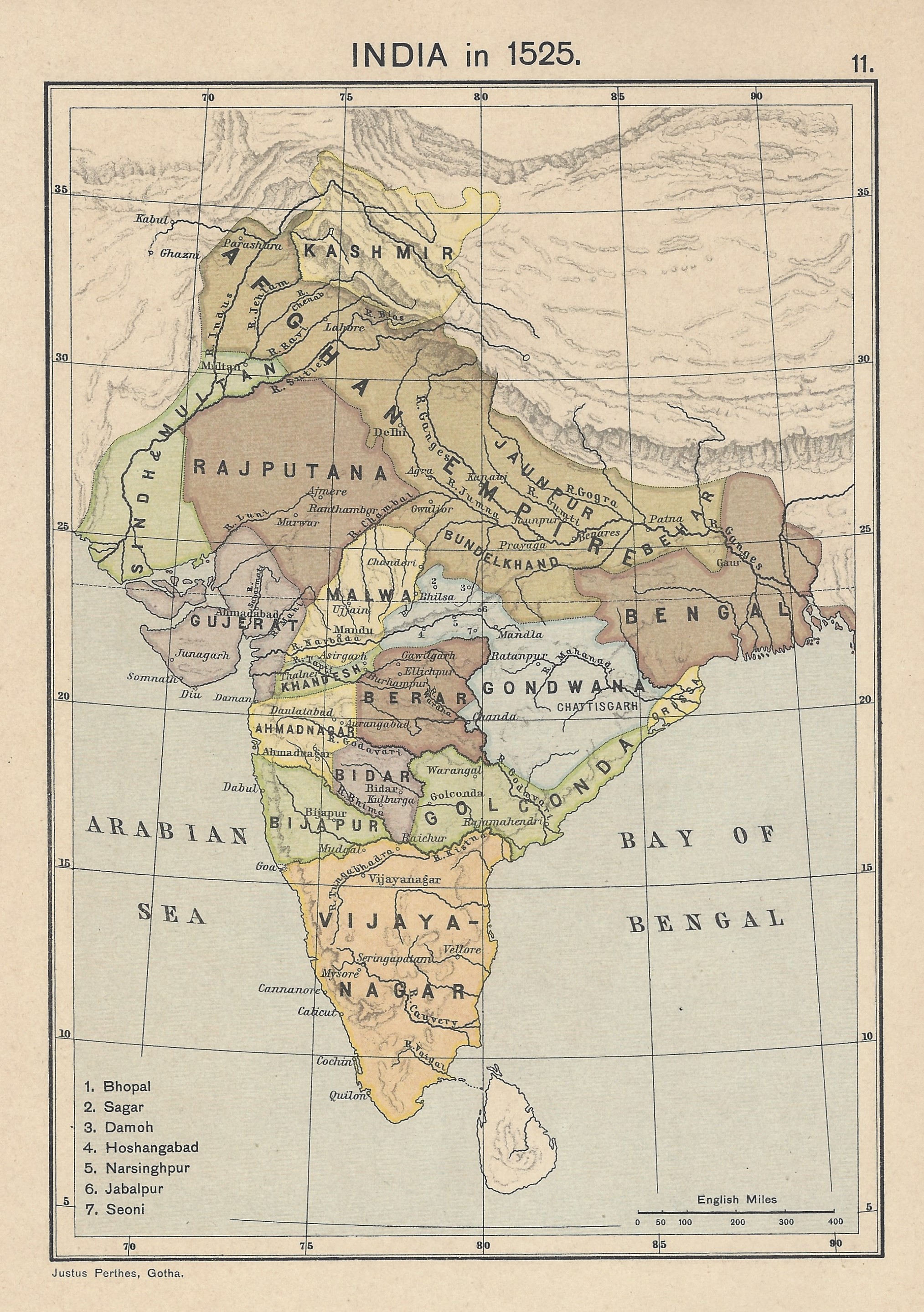|
Sajjangad
Sajjangad, meaning "Fort of Good People", is located near the city of Satara (city), Satara, India. It is the final resting place of Samarth Ramdas, Sant Ramdas in 18th century India (born 1608). His teachings and works written in books such as Dasbodh are read and followed by many people even today in the state of Maharashtra and Sajjangad is a popular place of pilgrimage. History The fort was built by Bahamani rulers in between (1347-1527). Later (1527-1686) it came in possession of the Adilshahi dynasty. This fort was captured by Chhatrapati Shivaji Maharaj on 2 April 1673 from Adilshah. Previously known as Parali, it was renamed Sajjangad. It came into possession of the Mughals in 1700, and was renamed as Navrous Tara. The fort was recaptured within years by the Marathas. It remained in Maratha hands until the demise of the Maratha Empire by the British in 1818. Present day The maintenance of the fort and the Samadhi (final resting place) of Sadguru Shri Samarth Ramdas ... [...More Info...] [...Related Items...] OR: [Wikipedia] [Google] [Baidu] |
Samarth Ramdas
Ramdas (c. 1608 – c. 1682), also known as Samarth Ramdas Swami or Ramdas Swami, was an Indian Hindu saint, philosopher, poet, writer and spiritual master. He was a devotee of the Hindu deities Rama and Hanuman. Early life Ramdas or previously Narayan Thosar was born at Jamb, a village in present-day Jalna district, Maharashtra on the occasion of Rama Navami, probably in 1608 CE. He was born into a Marathi Deshastha Rigvedi Brahmin family to Suryajipant and Ranubai Thosar. His father was thought to have been a devotee of the Vedic deity, Surya. Ramdas had an elder brother named Gangadhar. His father died when Narayan was only seven years of age. He turned into an introvert after the demise of his father and would often be noticed to be engrossed in thoughts about the divine. As per legend, Narayan fled his wedding ceremony in Asangao near Jamb, at age 12, upon hearing a ''pandit'' (Hindu priest) chant the word Saawadhaana!''' (Beware!) during a customary Hindu wedding rit ... [...More Info...] [...Related Items...] OR: [Wikipedia] [Google] [Baidu] |
Satara (city)
Satara () (ISO 15919, ISO: Sātārā) is a city located in the Satara District of Maharashtra states and territories of India, state of India, near the confluence of the river Krishna River, Krishna and its tributary, the Venna River, Venna. The city was established in the 16th century and was the seat of the Chhatrapati of the Maratha Kingdom, Shahu I. It is the headquarters of Satara Tehsil, as well as the Satara District. The city gets its name from the seven forts (Sat-Tara) which are around the city. The city is known as a Soldier's city as well as Pensioner's city. The city had a population of 179,147 in 2011. History The first known Muslim rule of the Deccan sultanates, Deccan took place in 1296. In 1636, the Nizam Shahi dynasty came to an end. In 1663, Shivaji conquered Parali and Satara fort. After the death of Sambhaji, Chhatrapati Sambhaji (Son of Chhatrpati Shivaji Maharaj), Shahu I, Shahu, heir apparent to the Maratha Kingdom, was captured by Mughal Empire, Mughal ... [...More Info...] [...Related Items...] OR: [Wikipedia] [Google] [Baidu] |
List Of Forts In Maharashtra
The Forts of Maharashtra are often referred to as ''Green Canyon of India''. This is a list of forts in Maharashtra, a state of India.(District) * Harshal Fort (Nashik district, Nashik) * Agashi Fort * Ahmednagar Fort * Mandar Fort * Ajinkyatara * Akluj Fort * Akola Fort * Alang Fort * Ambolgad * Anjaneri * Anjanvel Fort * Ankai Fort * Antur Fort * Arnala fort * Asava fort * Asheri fort * Aurangabad Fort * Avandha Fort * Avchitgad * Bahadur Fort * Balapur Fort * Ballarpur Fort * Bankot fort * Belapur Fort * Bhagwantgad * Bhairavgad * Bhamer Dhule * Bharatgad * Bhaskargad/Basgad * Bhavangad Fort/Bhondgad * Bhivgad fort * Bhorgiri fort * Bhudargad Fort * Bhupatgad Fort * Bhushangad * Birwadi fort * Bitangad * Bombay Castle * Castella de Aguada/Bandra Fort * Chanda Fort * Chandan Fort * Chandragad/Dhavalgad * Chandwad fort * Chauler Fort/Chaurgad * Chavand fort * Dategad * Dativare fort * Daulatabad Fort * Dermal Fort * Devgad fort * Dhak bahiri * Dhodap * Dhunda fort (Nashik) * ... [...More Info...] [...Related Items...] OR: [Wikipedia] [Google] [Baidu] |
Buildings And Structures Of The Maratha Empire
A building or edifice is an enclosed structure with a roof, walls and windows, usually standing permanently in one place, such as a house or factory. Buildings come in a variety of sizes, shapes, and functions, and have been adapted throughout history for numerous factors, from building materials available, to weather conditions, land prices, ground conditions, specific uses, prestige, and aesthetic reasons. To better understand the concept, see ''Nonbuilding structure'' for contrast. Buildings serve several societal needs – occupancy, primarily as shelter from weather, security, living space, privacy, to store belongings, and to comfortably live and work. A building as a shelter represents a physical separation of the human habitat (a place of comfort and safety) from the ''outside'' (a place that may be harsh and harmful at times). buildings have been objects or canvasses of much artistic expression. In recent years, interest in sustainable planning and building pract ... [...More Info...] [...Related Items...] OR: [Wikipedia] [Google] [Baidu] |
Dasbodh
''Dāsbodh'', loosely meaning "advice to the disciple" in Marathi, is a 17th-century bhakti (devotion) and jnana (insight) spiritual text. It was orally narrated by the saint Samarth Ramdas to his disciple, Kalyan Swami. The ''Dāsbodh'' provides readers with spiritual guidance on matters such as devotion and acquiring knowledge. Besides this, it also helps in answering queries related to day-to-day life and how to find solutions to it. Background The ''Dāsbodha'' was written in 1654 by Samarth Ramdas Swāmi (1608-1681), a satguru, a Hindu saint from Maharashtra, in the local Marathi language. It is a comprehensive volume in verse form providing instructions on the religious life, presented in the format of a conversation between a Guru and disciple. The narration is believed to have taken place in a cave called Shivthar Ghal (pronounced shiv-ther-gaal) in the Raigad district of Maharashtra. Style ''Dāsbodh'' is written in the verse form known as ''owi'' (''ōvyā'') in ... [...More Info...] [...Related Items...] OR: [Wikipedia] [Google] [Baidu] |
Shivaji
Shivaji I (Shivaji Shahaji Bhonsale, ; 19 February 1630 – 3 April 1680) was an Indian ruler and a member of the Bhonsle dynasty. Shivaji carved out his own independent kingdom from the Sultanate of Bijapur that formed the genesis of the Maratha Empire. In 1674, he was formally crowned the ''Chhatrapati'' of his realm at Raigad Fort. Shivaji offered passage and his service to the Mughal emperor Aurangzeb to invade the declining Sultanate of Bijapur. After Aurangzeb's departure for the north due to a war of succession, Shivaji conquered territories ceded by Bijapur in the name of the Mughals. Following his defeat at the hands of Jai Singh I, the senior most general ("Mirza (noble), Mirza Raja") of the Mughal Empire, in the Battle of Purandar, Shivaji entered into vassalage with the Mughal empire, assuming the role of a Mughal chief and was conferred with the title of ''Raja (title), Raja'' by Aurangzeb. He undertook military expeditions on behalf of the Mughal Empire for a ... [...More Info...] [...Related Items...] OR: [Wikipedia] [Google] [Baidu] |
Adilshahi
The Sultanate of Bijapur was an early modern kingdom in the western Deccan and South India, ruled by the Muslim Adil Shahi (or Adilshahi) dynasty. Bijapur had been a ''taraf'' (province) of the Bahmani Kingdom prior to its independence in 1490 and before the kingdom's political decline in the last quarter of the 15th century. It was one of the Deccan sultanates, the collective name of the kingdom's five successor states. The Sultanate of Bijapur was one of the most powerful states on the Indian Subcontinent at its peak, second to the Mughal Empire which conquered it in 1686 under Aurangzeb. After emigrating to the Bahmani Sultanate, Yusuf Adil Shah rose through the ranks to be appointed governor of the province of Bijapur. In 1490, he created a ''de facto'' independent Bijapur state which became formally independent with the Bahmani collapse in 1518. The Bijapur Sultanate's borders changed considerably throughout its history. Its northern boundary remained relatively stable, ... [...More Info...] [...Related Items...] OR: [Wikipedia] [Google] [Baidu] |
Maratha Empire
The Maratha Empire, also referred to as the Maratha Confederacy, was an early modern India, early modern polity in the Indian subcontinent. It comprised the realms of the Peshwa and four major independent List of Maratha dynasties and states, Maratha states under the nominal leadership of the former. The Marathas were a Marathi language, Marathi-speaking peasantry group from the western Deccan Plateau (present-day Maharashtra) that rose to prominence under leadership of Shivaji (17th century), who revolted against the Bijapur Sultanate and the Mughal Empire for establishing "Hindavi Swarajya" (). The religious attitude of Aurangzeb, Emperor Aurangzeb estranged Kafir, non-Muslims, and the Deccan wars, Maratha insurgency came at a great cost for his men and treasury. The Maratha government also included warriors, administrators, and other nobles from other Marathi people, Marathi groups. Shivaji's monarchy, referred to as the Maratha Kingdom, expanded into a large realm in the 18th ... [...More Info...] [...Related Items...] OR: [Wikipedia] [Google] [Baidu] |






